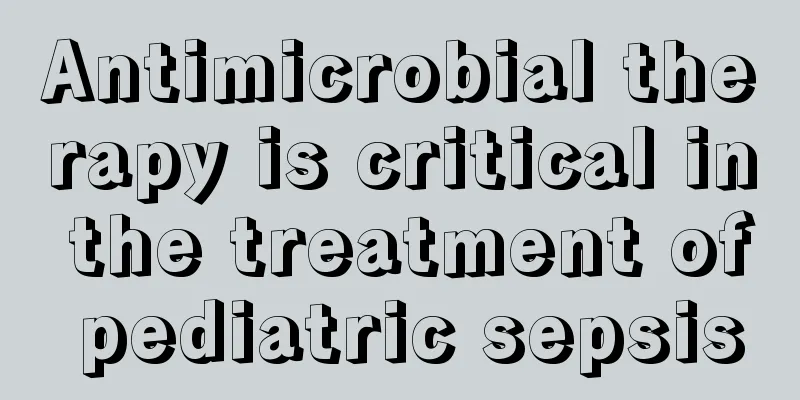Antimicrobial therapy is critical in the treatment of pediatric sepsis

|
Generally, the normal body temperature of children is between 36.5 and 37.5. If it is higher than this temperature, it is a fever. If it is a high fever, you must be alert. Many diseases have the symptom of high fever, such as pediatric sepsis. The most important treatment for pediatric sepsis is antibacterial. 1. Antibacterial treatment Most children with sepsis can recover with active treatment, but some children who are young, have poor nutritional status, are not treated in time, or whose pathogens are not sensitive to antimicrobial drugs often have a poor prognosis. The main pathogen causing sepsis is bacteria, so the use of antibiotics is the main means of treating sepsis. When the pathogen is unknown, drugs can be selected based on the bacterial invasion route, age of the child, clinical manifestations, etc. Broad-spectrum antibiotics or combination of drugs are usually used. Once the pathogen is identified, adjustments can be made based on culture and drug sensitivity test results. Long-term use of broad-spectrum antibiotics can lead to secondary fungal infections. 2. Fever? Beware of sepsis! Sepsis refers to a systemic inflammatory response syndrome caused by infection. Sepsis has a relatively low mortality rate in children compared with adults, but remains a leading cause of death in children admitted to advanced intensive care units (ICUs) in developed countries. The main pathogen causing sepsis is bacteria, and others such as viruses, fungi, mycoplasma, and parasites can also cause it. However, not all children with sepsis have positive blood culture results for pathogenic microorganisms. 3. Children with high fever should seek medical attention promptly 1. When you press the skin with your fingers, small purple dots appear on the surface and do not fade (turn white); 2. Unable to take in fluids and showing signs of dehydration; 3. Pale or gray skin, or spots, and low skin temperature; 4. Continuous pain occurs; 5. Drowsiness or difficulty waking up, appearing weak; 6. Neck stiffness; 7. Convulsions caused by fever occur; 8. Continuous confusion or unconsciousness; 9. The limbs cannot move normally; 10. Difficulty breathing; 11. Continuous crying. |
<<: Nursing and complications of coronary heart disease, attention should be paid to methods
>>: Drinking soy milk makes you fart a lot, it turns out this is because
Recommend
1 sleeping position can 100% solve snoring
Many people snore when they sleep without knowing...
Does tooth decay cause bad breath?
As to whether tooth decay can cause bad breath, i...
Is breast cancer chest wall metastasis considered distant metastasis?
The chest wall is not part of the breast. If brea...
The occurrence of cervical cancer is also related to one's own age
The occurrence of cervical cancer is also related...
What should I do if my dental silver shrinks?
In people's daily life and work, some factors...
What causes back pain and stomach pain?
What is lower back pain and stomach pain? This is...
Is it okay to eat an apple at midnight?
Fruit is a food that people usually think is rela...
How to feed babies correctly?
When feeding the baby, there are many things that...
How can uterine cancer be diagnosed
During the interviews and surveys of many endomet...
What are the early symptoms of breast disease
Breast disease is a relatively common gynecologic...
Why do I sweat when I have a cold at night?
Some friends who have a cold will sweat when they...
Symptoms after lung cancer recurrence
What are the symptoms of lung cancer recurrence? ...
Experts explain what causes colon cancer?
As more and more people are diagnosed with colon ...
To prevent brain cancer, you should use your mobile phone in a healthy way
Nowadays, mobile phones have become a necessity f...
What causes acne around the eyes
Everyone is very concerned about the image of the...









